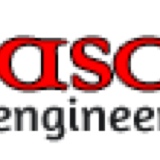Information
-
Document No.
-
Audit Title
-
Client / Site
-
Conducted on
-
Prepared by
-
Location
-
Personnel
-
Account Name
-
Postal Address
-
Name of Client
-
Site Address
-
Customer Description
-
Contact
-
Description of Job
-
Date Received
-
Date Started
-
Date Completed
-
Order Number
-
Quote/Estimate
-
Tax Invoice Number
-
Home
-
Work
-
Mobile
-
Mobile 2
-
Fax
-
Email
Customer Declaration
-
I authorise this contractor to carry out the work as detailed on this form. I understand that no significant additional work will be undertaken without my authorisation and I accept the terms and conditions. I will settle payment by:
-
Customers Signature
Safety Verification of Gas System/Supply
-
Suitable Fittings
-
Gas Tightness
-
Available Flow Rate mj/hr
-
Gas Pressure kpa
-
Drop Test kpa
-
Meter
Pipework
-
Pressure Test
-
Pressure Test - Pressure kpa
-
Installation Test kpa
Service Procedure
-
Isolate gas supply and/or electrical supply to the appliance
-
Remove gas control knobs and any panels from the gas appliance to gain access to gas valves, burners and pilot assembly
-
Clean inspirators primary air inlet Clean all openings from dust,spider webs etc.
-
Remove burner and clean all burner ports, check for corrosion
-
Remove pilot burner & clean both pilot injector and main burner injector
-
Reassemble both pilot burner and main burner
-
Visually check wires and electrical connections
-
Test all electrical safety interlocks for sound operation
-
Check ignitor probe for positioning and quick ignition
-
Check flame rectification probe for correct milliamp signal and positioning
-
Check thermocouple and/or thermopile for correct millivolt and positioning
-
Visually check flame picture and flame stability, check that aeration is correct
-
Check dynamic pressure and adjust if necessary
-
Leak test gas pipe work and controls for soundness
-
Which test did you use?
-
Check gas control valves for correct operation, physical damage and general wear and tear, clean any gas filters gauze or fabric
-
Ensure the draught diverter is clear of obstructions and check for draught using smoke while gas appliance is still cold
-
Check for condition of flue system and gas terminal to ensure that it has not been affected by any foreign or organic matter clear any flue blockage
-
Check the gas appliance position in relation to any combustible materials
-
Check room size for correct ventilation requirements against ASNZS 5601:2010
-
Ensure the room enclosure is not used to store flammable goods or chemicals, as flames will contaminate the combustion air and create toxic or deadly chemical reactions
-
Locate the date and ensure that the gas appliance is suitable for its intended use
-
Recommission the appliance in accordance with ASNZS 5601:2010
OSHE ~ Hazards Identifaction & Site Safety Requirements
-
Temperature - Climate Conditions
-
Action
-
Combustibles - Fire Resistant Material - Flammable Gas Signage
-
Action
-
Visitors - Induct all visitors & contractors with induction cards
-
Action
-
Moving Vehicles - Keep clear - Stay visible to operator - Signage
-
Action
-
Ladders - Only commercial grade in good condition - Used correctly
-
Action
-
Scaffolding - Installed correctly - Regularly checked - Certified
-
Action
-
Falls from height - Use fall protection - Scaffolding in place - Height notifiable work
-
Action
-
Overhead Work - Secure tools from falling - Visitors keep clear
-
Action
-
Electricity in use - Use RCD's - Check leads regularly - Tagged
-
Action
-
Powertools in use - Check in good condition - Use correctly - Tagged
-
Action
-
Excavations - Cover holes - Secure site - Stay visible to operator
-
Action
-
Tripa/Slipa - Keep site tidy - Use waste bin on site
-
Action
-
Illness/Disease - Toilet on site - Running water on site
-
Action
-
First Aid Certificate - Current - ABC's
-
Action
-
Gas Set/Mapp Gas - Oxygen - Acetylene - Shut off when not in use
-
Action
-
First Aid Kit - Upgraded - Where is it?
-
Action
Combustion Related Test
-
CO/CO2 %
-
Flue Temp 300 C
-
Ventilation
-
CO ppm
-
Flue Material C
-
Temperature - Climate Consitions
-
Flue Condition
-
Gas appliance used for intended purpose
-
Gas appliance used for intended purpose - Reason
Gas Appliance Markings
-
Make
-
Model
-
Serial Number
-
Isolating Valve
-
Clearances
-
Flue Type
-
Flue Position
-
Appliance Pressure
-
Appliance Pressure High
-
Appliance Pressure Low
-
Input Rating
-
Commissioned
-
Ventilation
-
Combustion
-
Seismic Restraint
-
Date of Install
-
Gas Certification Number
-
Category
-
Type
-
Gas Supplier
-
Labelled
-
Test Pressure
-
Test Time
-
Nil Leak Tolerance
-
Regulators
-
Auto
-
Manual
-
LP-HP
-
First Stage
-
Second Stage
-
Appliance Reg
Materials
-
Quantity
-
Supplier Code
-
Description
-
Unit Cost
-
Amount
-
Materials Total
Labour & Travel
-
Date
-
Select date
-
Select date
-
Select date
-
Select date
-
Select date
-
Select date
-
Select date
-
Time
-
Select date
-
Select date
-
Select date
-
Select date
-
Select date
-
Select date
-
Select date
-
Initials
-
Add signature
-
Add signature
-
Add signature
-
Add signature
-
Add signature
-
Add signature
-
Add signature
-
Add signature
-
Travel
-
Description
-
Materials Total
-
Labour Total
-
Travel Total
-
Sub Total
-
GST
-
Invoice Total
Ventilation Requirements
-
For further information see ASNZS 5601:2010, Ventilation requirements, parts 1 & 2
In brief:
- Ventilation shall ensure proper operation of the gas appliance and flueing system and maintain safe ambient conditions
- Where a gas appliance is installed in a room, that room shall be ventilated
- Where the total input of open flued appliance exceeds 3MJ/hr for each cubic metre of room volume, the area shall be ventilated
- Where the total input of open flued appliance does not exceed 3MJ/hr per cubic metre of room volume, the required air may be provided by adventitious openings, ie gaps around doors and windows
- to establish whether the required air is to be provided by adventitious openings or additional openings. Calculate the total input of the gas appliance or appliance in the room in MJ/hr and divide by the room volume in cubic metres -
Total gas input MJ/HR
-
Divided by
-
Room Volume m3 L x W x H
-
X
-
X
-
= m3
-
= MJ per cubic metre
-
Natural ventilation. Two permanent openings shall be provided each with a minimum free area as calculated using:
A = FxT formula
A = Minimum free area mm square
F = Factor given in table 13
T = Total gas consumption of all gas appliances -
Adventitious Ventilation
-
Additional Ventilation Required
-
Checked
-
Initials
Commissioning and Final Testing Checks (normal operating conditions)
-
Leak Test
-
OK
-
Comments
-
Gas Consumption
-
OK
-
Comments
-
Operation
-
OK
-
Comments
-
Reignition
-
OK
-
Comments
-
Flame Picture
-
OK
-
Comments
-
Temperature Hazards
-
OK
-
Comments
-
Safeguard System
-
OK
-
Comments
-
Safety Shut Down
-
OK
-
Comments
-
Visually Check Wires
-
OK
-
Comments
-
Earth Continuity Test 3 Volts less than 0.5 ohm
-
Comments
-
Insulation Resistance 500 Volts less than 1M ohm
-
Comments
-
Polarity Test
-
Comments
-
Troubleshooting and Fault Finding
-
Have you remedied the ...
-
What is the Root Cause of this failure or breakdown?
Completion of Work & Job Card
-
Signature of Technician
-
Date Signed







